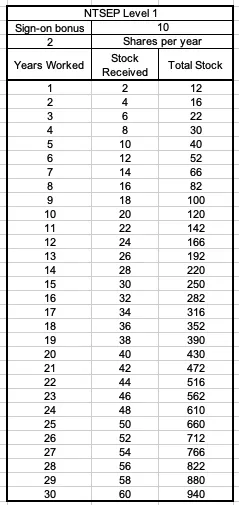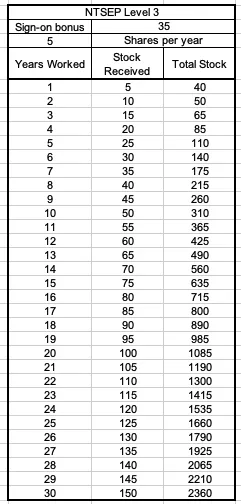The National Tax Strategy Education Program
This is the history of Justin Stephens attempting to explain how America's Holding Company works and how to be a part of it.
This is also the product that our members receive once they subscribe.
We believe education should be free, and you should be given an opportunity to invest in it which is the cornerstone of everything we do.

Mastering Goal-Setting for Entrepreneurs: A Life Strategy Guide
Hey everyone, Justin here from Life with Justin Stephens! As we continue documenting my journey and sharing insights on personal finance, success, business, sales, and marketing, today's Life Strategy post is all about a skill that's transformed my entrepreneurial path: goal-setting. Whether you're launching a startup, scaling your side hustle, or navigating career pivots, effective goal-setting isn't just about dreaming big—it's about turning those dreams into actionable plans. Drawing from my own experiences and proven strategies, let's break it down step by step. If you're ready to level up your personal development and self-improvement, this one's for you.
Why Goal-Setting Matters for Entrepreneurs
In the fast-paced world of business, vague ambitions like "grow my company" won't cut it. Clear goals provide direction, motivation, and a way to measure progress—much like the small wins we discussed earlier this week or the financial literacy empowerment from Operation HOPE. Without them, it's easy to get lost in daily tasks, leading to burnout or missed opportunities. From my journey, I've seen how structured goals helped me secure funding, boost sales, and build a sustainable marketing pipeline. Research shows that people who write down their goals are 42% more likely to achieve them, so let's make this practical.
The SMART Framework: Your Goal-Setting Foundation
Start with the SMART method—Specific, Measurable, Achievable, Relevant, and Time-bound. Here's how to apply it:
Specific: Instead of "increase revenue," aim for "launch a new email marketing campaign targeting 1,000 leads."
Measurable: Track progress with metrics, like "hit $10,000 in monthly sales."
Achievable: Be realistic—factor in your resources and skills. If you're a solo entrepreneur, don't overcommit.
Relevant: Align goals with your bigger vision, such as personal growth or financial stability.
Time-bound: Set deadlines, e.g., "achieve this by Q3 2025."
In my business, using SMART turned a hazy idea into a concrete plan: I set a goal to network with 50 potential clients in three months, which led to my first major contract.
Advanced Tips: Break It Down and Stay Accountable
Once your goals are SMART, chunk them into milestones. Use tools like Trello or Asana for visual tracking—I'll cover more in future Resources posts. Build accountability by sharing goals with a mentor or accountability partner; this boosts commitment by 65%.
Don't forget reflection: Review weekly to adjust for obstacles. If a sales target slips, analyze why and pivot. This ties into self-development goals, fostering resilience and continuous improvement.
Integrating Goal-Setting with Personal Finance and Success
Goal-setting isn't isolated—link it to finances by budgeting for business investments or saving for growth. For entrepreneurs, this means setting revenue targets that support personal wealth-building, like investing in stocks or retirement funds.
Why Join Life with Justin Stephens?
Our blog covers the full spectrum: my raw Journal Entries, diverse Point of View stories, actionable Life Strategy like this, helpful Resources, and inspiring Great Causes.
Subscribe at justindcstephens.com for daily motivation delivered to your inbox.
Call to Action: Hit subscribe, share this with a fellow entrepreneur, and comment: What's your top goal for the next quarter?
P.S. Tomorrow, a Point of View post featuring a guest's take on overcoming sales slumps. Don't miss it!
To your success,
Justin Stephens
National Tax Strategy Education Program
Our Joint Education Program with companies to provide for our employees together.
The goal of the National Tax Strategy Education program is to take care of our team throughout time.
Below is the embedded weekly update, and the mission is to update this weekly for the next 100 years.
What is included:
Educational Content created and produced by Justin Stephens
Made in America US Flag
X Community
Month to Month Agreement
HR Support for all employees to become part of our ESOP.
Logo added to our sponsorship page
National Tax Strategy Education Program - Level 1
Every employee sign-on bonus: 10 Class B shares of AHCI
Annual Class B Stock Gifts: 2 Class B shares per year
Multiplier: Number of years co-employed with AHCI
Monthly Investment: $150 per month per company

National Tax Strategy Education Program - Level 2
Every employee sign-on bonus: 25 Class B shares of AHCI
Annual Class B Stock Gifts: 4 Class B shares per year
Multiplier: Number of years co-employed with AHCI
Monthly Investment: $300 per month per company

National Tax Strategy Education Program - Level 3
Every employee sign-on bonus: 35 Class B shares of AHCI
Annual Class B Stock Gifts: 5 Class B shares per year
Multiplier: Number of years co-employed with AHCI
Monthly Investment: $750 per month per company

National Tax Strategy Education Program - Level 4
Every employee sign-on bonus: 49 Class B shares of AHCI
Annual Class B Stock Gifts: 12 Class B shares per year
Multiplier: Number of years co-employed with AHCI
Monthly Investment: $1500 per month per company

National Tax Strategy Education Program - Level 5
Every employee sign-on bonus: 80 Class B shares of AHCI
Annual Class B Stock Gifts: 18 Class B shares per year
Multiplier: Number of years co-employed with AHCI
Monthly Investment: $2000 per month per company









